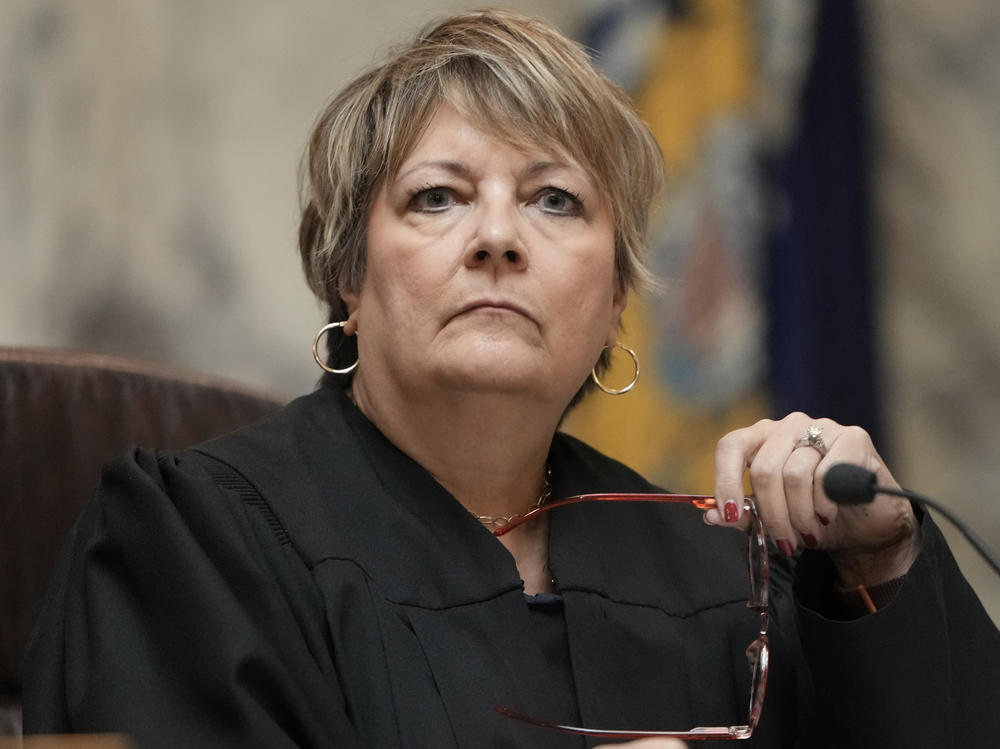Section Branding
Header Content
A Wisconsin redistricting case centers on voter 'islands' and could lead to new maps
Primary Content
MILWAUKEE — The Wisconsin Supreme Court hears arguments Tuesday in a case that could toss what critics say are the state's lopsided legislative maps.
Statewide elections in Wisconsin are often really close. But Republicans have a two-thirds supermajority in the state Senate, and nearly so in the state Assembly.
Republicans have used their big legislative margins to block appointments made by Democratic Gov. Tony Evers, threaten the job of Wisconsin Elections Administrator Meagan Wolfe over the running of the 2020 election won here narrowly by President Biden, and stifle many bills proposed by Democratic lawmakers.
Democrats, who are seeking new maps before the 2024 elections, say the state's gerrymandered maps are partly because the GOP had too much control over recent redistricting. But the case Democrats are making at the high court begins with a more narrow argument about the districts.
"All the territory needs to be touching. It needs to be one unit. But that's not the way the maps look," says attorney Jeff Mandell, who represents 19 Democratic voters.
He argues the Wisconsin Constitution requires the 132 legislative districts in the state to be contiguous.
"The majority of the districts in Wisconsin presently include non-contiguous territory — little islands and chunks that are disconnected from the rest of the district," Mandell says.
He argues that dilutes the ability of voters to unify behind common interests.
But attorney Luke Berg, who represents 10 Wisconsin voters from districts Democrats want to change, challenges the contiguity claim. Berg says the legislative maps have long recognized that some communities in this state have disconnected neighborhoods.
"Everybody has understood that you're allowed to keep a town together, even though its parts are disconnected," Berg says. "And so, the resulting district then will sometimes have these tiny little disconnected islands."
Berg says very few of the more than 200 voter ''islands" in Wisconsin have significant populations.
The Wisconsin redistricting case also focuses on separation of powers, with Democrats arguing the state Supreme Court, when conservative justices controlled it last year, wrongly inserted itself into a redistricting dispute, and accepted GOP-drawn maps. Republicans refute that claim.
But liberals now control the Wisconsin court, with this April's election of Justice Janet Protasiewicz, who replaced a conservative justice who retired.
Protasiewicz was sworn in Aug. 1. The redistricting lawsuit was filed Aug. 2. The high court decided to hear the case directly, instead of having it argued at a trial court first.
Protasiewicz has refused to recuse herself from the case for calling the maps "rigged" while campaigning, even as Republican lawmakers threaten to impeach her — depending on how she rules in the redistricting fight.
Copyright 2023 WUWM 89.7 FM - Milwaukee's NPR. To see more, visit WUWM 89.7 FM - Milwaukee's NPR.
Bottom Content

